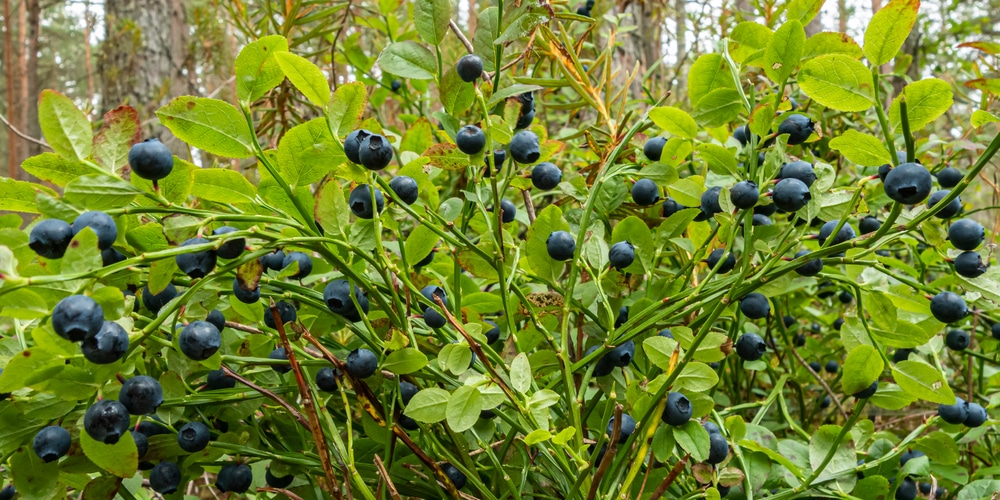Blueberries cultivation is gaining popularity in Minnesota. The health benefits associated with blueberries are well known and are an influencing factor for farmers to grow the crop.
Blueberries are rich in antioxidants, and vitamin C. Blueberry bushes also make your garden beautiful and attractive. However, growing blueberries in Minnesota can be challenging due to soil structure and harsh winters. To grow blueberries successfully in Minnesota, you need to prepare your garden perfectly and choose the right cultivars. Read more and discover how to grow blueberries in Minnesota.
Choosing Cultivars

There are several blueberry cultivars that are suited for cultivation in Minnesota. The best cultivars to grow in your garden include Chippewa, Northcountry, Superior, Northblue, and Polaris. These cultivars are best suited for the winter temperatures and soil conditions in Minnesota. These cultivars were created by the University of Minnesota to withstand the state’s winter and soil composition.
These cultivars are short-statured bushes that produce flavorful fruits and are adapted to survive the Minnesota winter temperatures. The cultivars are derived from the crosses of low and high-bush blueberries. The University of Minnesota blueberries cultivars are the best for your garden because they are suited to survive in every part of the state.
Choosing and preparing your garden
Blueberries do well in acidic soil that is well-drained, loose, and organic. For your blueberries to grow perfectly, you need to select a frost-free site with full sun and excellent air circulation. Ensure the area has a consistent supply of moisture. Your garden should have good internal and surface soil drainage to ensure stagnant water doesn’t kill your blueberries.
Soil conditions
Choose a site with porous soils that have high organic matter content. Blueberries will do well in soils such as coarse sands, sandy loam, and loamy sands that provide the best aeration your plants need. For better yields, you can improve the composition of your soil by adding approximately two cubic feet of peat per cultivar to the soil. Ensure you mix the peat properly with the soil.
Soil PH
Blueberries do well in acidic soil with a PH of 4 to 5. Before planting, you need to assess your soil PH by either sending your sample soil to the University of Minnesota for testing. You can also test it yourself using a PH meter. A PH of 5.8 and above will cause iron chlorosis to your plants, which leads to yellowing of the leaves.
If your soil PH is between 5 and 7, you can amend the soil by mixing 6 inches of soil with 4 inches of peat to add organic matter. You can also acidify the soil by adding sulfur compounds. You should amend your soil before planting your blueberries.
Planting
Spring is the best time to plant your blueberries as it allows them to benefit from the spring rains, minimize the chances of winter injury and prevent you from losing your blueberries due to frost heaving. Late April to early May is the best period to plant your blueberries.
Dig the holes and ensure they are more than a feet deep and approximately a foot in diameter. Ensure the plants are spaced up to 4 feet apart and your rows around 9 feet apart. Loosen the root system at planting and cover the roots with around three inches of soil. Add mulch to preserve soil moisture, add organic matter and keep soil temperatures cool. Mulching will also help control weeds, minimize the need for cultivation that may injure the roots of your blueberries.
Pruning
Ensure you prune off flower buds in new plantings. Do not allow your plant to bear fruits in the first two years of planting to allow the blueberries to develop. Your blueberries bushes will take 8 to 10 years to reach maturity and can last for 30 to 50 years.
Fertilization
Nitrogen fertilizers will do wonders for your blueberries and give them a tremendous growth response. These fertilizers will increase acidity in the soil by leaving acidic residues suitable for blueberries’ growth. Choose acid fertilizers such as ammonium sulfate that provide you blueberries with nitrogen. Avoid ammonium nitrate since it increases soil PH.
Irrigation needs
Ensure your plants are watered regularly to ensure there is enough soil moisture around the plant. In normal conditions, your blueberries will require around 2 inches of water per week. Avoid over-watering to avoid saturating the soil.
Pest and diseases control
Good air circulation in your garden minimizes the chances of diseases. Birds and rabbits pose a greater threat as they can eat berries and new growth, respectively. Lightweight nets and wire cages can be used to fend off birds and rabbits.
Related Article: Bad Blueberry Companion Plants
